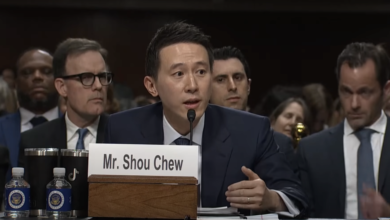A one-ton truck bomb ripped through the U.S.-owned Marriott Hotel in Islamabad, Pakistan, on Sept. 19, killing at least 53 people. The elite hotel was a place frequented by foreign diplomats and wealthy Pakistanis. The U.S. government quickly blamed al Qaeda, but it is not yet clear who attacked the hotel.
|
The attack comes on the heels of a string of bombings over the past year targeting police and military stations, pro-imperialist politicians and havens of the ruling elite.
In recent weeks, the U.S. has very publicly bombed and used ground forces to invade Pakistan, claiming they are targeting Taliban strongholds near the Afghan border. This has caused much hand-wringing among Pakistan’s ruling political establishment, known for being staunchly pro-U.S. and an ally in the “war on terror.”
The BBC reported on Sept. 22 that Pakistan’s army fired warning shots at two U.S. helicopters that breeched Pakistan’s airspace. Pakistan’s army said it will defend the country’s sovereignty and reserves the right to retaliate against any border violations.
These events are part of a confluence of happenings that could trigger a wider crisis in Pakistan for pro-U.S. politicians and their imperialist backers.
Pakistan’s new government
Pakistan’s new president, Asif Ali Zardari—husband of the late Benazir Bhutto and leader of the Pakistan Peoples Party (PPP)—has scrambled these past weeks to balance subservience to U.S. government dictates and placating the brewing anger of Pakistan’s people at the obvious violations of the country’s sovereignty. Zardari is a notoriously corrupt figure who harkens from the country’s past. During the presidency of Benazir Bhutto, Zardari was known as “Mr. 10 Percent”—a nod to how much he siphoned from each contractor wanting to do business with the Pakistani government.
Zardari and the PPP were able to ascend to power by capitalizing on Bhutto’s memory and the overwhelming anti-Musharraf sentiment throughout the country. Gen. Pervez Musharraf had ruled the country since 1999 when he led a military coup that overthrew the elected government of then-Prime Minister Nawaz Sharif, the leader of Pakistan Muslim League-N, another main political party in Pakistan. Over Musharraf’s nine years in power, he was a ruthless military dictator who suspended the constitution, repressed dissent and subordinated Pakistan to Washington’s dictates. Musharraf was imperialism’s guy in Pakistan.
The PPP formed an anti-Musharraf coalition government with Sharif’s Muslim League-N. Sharif left the alliance when it became clear that Zardari would not reappoint Supreme Court Chief Justice Iftikhar Muhammad Chaudhry, who had been sacked by Musharraf. Zardari feared corruption charges against him would be reinstated if he allowed Chaudhry back into the picture. Sharif’s party is an Islamic party and is reactionary on social issues, but leans to the left of the PPP’s current leadership on certain issues. But it is not an anti-imperialist formation.
The PPP is leading the government right now, however tenuously, mostly because of its past deeds and reputation. The PPP presents itself as the party of the working class, and its founder Zulfikar Ali Bhutto—Benazir’s father and Pakistan’s leader from 1971-1979—is revered for having implemented radical reforms. Zulfikar Ali Bhutto focused on improving vital social services and developing the economy independently of foreign domination.
The PPP 2008 election manifesto sought to capitalize on Bhutto the father’s memory by affirming that it demands “power to the people.” The PPP promised to tackle mass unemployment and corruption; to provide clean drinking water; to empower women; and to support poor Pakistanis. As led by Zardari and a corrupt clique, these PPP promises amount to empty rhetoric.
Although the PPP reaped the benefits, it was the anger of the Pakistani masses that pushed Musharraf from power in August. Large street demonstrations rocked the country for weeks, demanding his resignation. Most viewed Musharraf and the military responsible for Benazir Bhutto’s assassination in December 2007.
This mass sentiment had forced the United States to change its position vis-?-vis Musharraf months ago. It was pressed to accept a change in government when it became clear that maintaining an unpopular military dictator was no longer tenable. The Pentagon preferred Musharraf, but the PPP was acceptable because of its leaders’ ties to imperialism.
In a country where 74 percent of people live on $2 a day and 38 percent of children over age five are malnourished, it is easy to see how the PPP could capitalize on anti-poverty promises. It remains to be seen how Zardari will grapple with these issues; whether he will concede meaningful reforms may largely depend on whether the people go back on the streets.
The PPP is committed to boosting the “private sector” as the main engine for economic growth. They want to make Pakistan “business friendly” and pursue World Bank- and IMF-style development goals, which focus exclusively on the needs of imperialism and the comprador sector of the country’s tiny capitalist class.
Government in a bind
The other burning issue in Pakistan today is its alliance with U.S. imperialism’s phony “war on terror.” Pakistan has been a solid ally of imperialism for nearly 30 years.
But tensions between the United States and Pakistan are higher than they have been for over a decade. U.S. air and ground attacks have caused a major stir.
The U.S.-Pakistan relationship blossomed in the 1980s as Pakistan’s border regions became a staging area for the CIA’s counterrevolutionary proxy war against the Soviet Union and the government in Afghanistan. The CIA used anti-communist fighters to dislodge a secular, revolutionary government in that country.
The core of these fighters, armed and funded by the U.S. government, later became the Taliban, al Qaeda and various U.S.-backed mercenary warlords. Pakistan’s army and intelligence services, the ISI, have maintained close ties with these organizations.
Since the 1980s, Islamic militants from both Pakistan and Afghanistan have used the border region as a base of operations. The 2001 war on Afghanistan, which displaced the Taliban government, was supported fully by Musharraf. Pakistan has received $10 billion in U.S. aid since then.
The U.S. imperialists also pressured the country to crack down on the Islamic militants in Pakistan. Musharraf dutifully followed orders because these forces opposed his subservience to Washington. As a result, a highly-coordinated Islamic insurgency in Pakistan began mounting attacks against the government.
Anti-imperialist sentiment runs high in Pakistan. The people do not want the government to be a U.S.-puppet regime.
The U.S.-NATO war on Afghanistan has been going badly for the occupiers in recent months. The number of occupation soldiers dying each month is up dramatically. Military experts and the U.S. presidential candidates are calling for a “surge” of troops in Afghanistan to further destroy the country.
This is because the population is rejecting the occupation that has brought untold misery upon them. The Taliban and other resistance groups have stepped up attacks on occupation troops. While these organizations are referred to by the U.S. military and media as the “Taliban” it’s important to note that, in reality, the Afghan resistance and their Pakistani allies are an amalgamation of organizations and individuals.
These groups have used the Pakistan-Afghanistan border region as a staging area for attacks. Now, these groups control significant portions of Afghanistan, especially in the south. And the boldness of anti-government attacks in Pakistan has risen as well.
This led to a U.S. military response. According to the New York Times, President Bush in July authorized U.S. Special Forces to launch attacks inside Pakistan without the Pakistani government’s permission. Pakistan’s rulers said little when U.S. drones bombed “terrorist camps” inside the country, but the firing of missiles into Pakistani territory and U.S. ground troop incursions set off a wave of anger among ordinary Pakistanis.
This reaction pushed Zardari and his cronies to speak up against the attacks. On Sept. 20, Reuters India reported that Zardari said Pakistan would no longer accept the infringement of Pakistan’s sovereignty under the guise of “fighting terrorism.” This followed comments by Pakistan’s top military official that the country’s territory would be defended from U.S. incursions by force.
Recent U.S. crimes in Pakistan have only inflamed the armed struggle there. Predictably, they have escalated the stakes and evoked more support for anti-U.S. operations, putting the government in a bind and risking further destabilization of an otherwise reliable client state.
Zardari and government officials have no choice but to oppose the U.S. invasion of Pakistan to avoid looking like puppets. They want to maintain legitimacy among Pakistan’s working and poor masses. They don’t want to be assassinated.
This is the government’s quandary. It is faced with the real aspirations of the Pakistani masses for independence and better lives. If it ignores them, there will be more mass protests, attacks, and, potentially the ascension of a revolutionary movement.
If the PPP begins defying the U.S. government too radically, however, it runs the risk of another U.S.-backed military coup. Only the intervention of the Pakistani people can set the country on a new and truly independent course.






